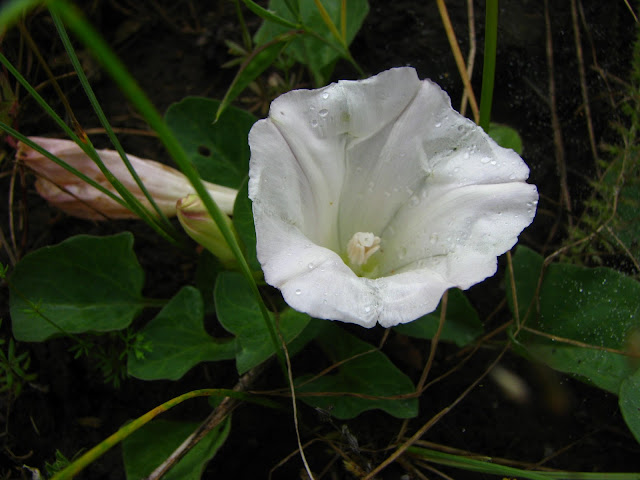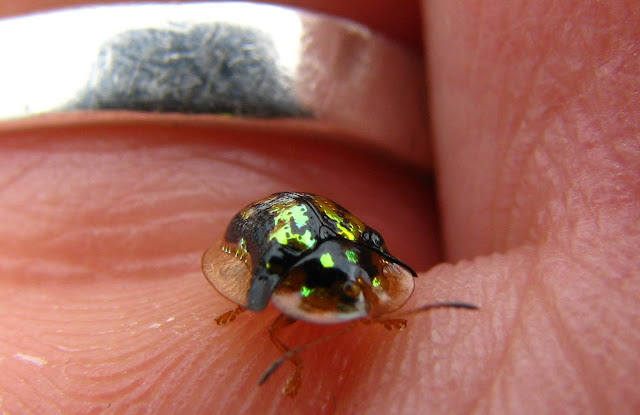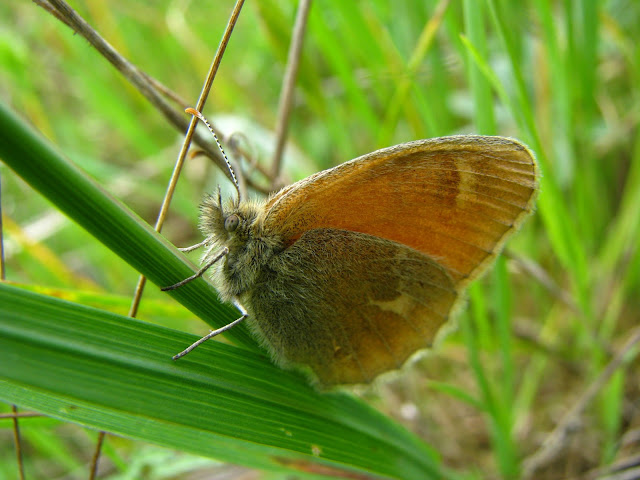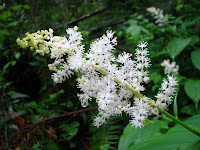 I was going to go on a whirlwind blab about parasites and being over run by insects but... We'll save that for another day. Maybe never. Since the last few blogs have been mostly pictures I feel obligated to submit something more informative this time. No fluff! (Maybe a teensy bit of fluff...)
I was going to go on a whirlwind blab about parasites and being over run by insects but... We'll save that for another day. Maybe never. Since the last few blogs have been mostly pictures I feel obligated to submit something more informative this time. No fluff! (Maybe a teensy bit of fluff...)I was inspired when the first friend I made in college came for a quick visit with her parasite fearing boyfriend. He seemed to get stuck on the idea of getting stung on the nose and having a gall grow full of squirming larvae. Admittedly an unpleasant thought, but an unlikely occurrence. As we all know (but may wish to ignore) the world is full of parasites, saprophytes, detritivores and predators that are downright frightening. So if you don't like any of those topics consider yourself forewarned.
 Lettuce start with some background. The Willamette Valley contains one of the most endangered ecosytems in the USA; the Oregon white oak prairie. This is characterized by stands of oak mixed in open prairie. The oaks were historically limited by frequent fires but are now maintained by humans cutting them down if they reach too high a density.The prairies of Western Oregon are home to many endangered plants and two butterflies. The plants include the Kincaid Lupine (Lupinus sulphureus spp kincaidii) which is the host plant for (surprise!) Fender's Blue butterfly. They lay their eggs on the back of the leaves, the larvae hatch and eat the plant until its time to pupate... Cute story huh?
Lettuce start with some background. The Willamette Valley contains one of the most endangered ecosytems in the USA; the Oregon white oak prairie. This is characterized by stands of oak mixed in open prairie. The oaks were historically limited by frequent fires but are now maintained by humans cutting them down if they reach too high a density.The prairies of Western Oregon are home to many endangered plants and two butterflies. The plants include the Kincaid Lupine (Lupinus sulphureus spp kincaidii) which is the host plant for (surprise!) Fender's Blue butterfly. They lay their eggs on the back of the leaves, the larvae hatch and eat the plant until its time to pupate... Cute story huh? |
| Kincaid Lupine |
 |
| Fender's shivering in the rain |
 |
| Silvery Blue on a Lathyrus genus pea |
It also is a host for Silvery Blues, but Silverys are less host specific and will lay eggs on just about anything in the pea family (Fabaceae or Leguminosae) and so are not endangered. Other threatened/endangered plants of these prairies include Golden Paintbrush, three kinds of Larkspur, a daisy, an aster, a lomatium, two checkermallows (what I thought was a weeds, ah enlightenment)... The other butterfly is Taylor's Checkerspot (Euphydryas editha taylori). But I digress.
 |
| Golden Paintbrush (Castilleja levisecta) |
 |
| Idunnowhatkind Larkspur |
 |
| Meadow checkermallow (Sidalcea campestris) |
 |
| Taylor's Checkerspot http://www.denman-conservancy.org/wp-content/uploads/2012/11/TaylorsB.jpg |
 The important thing is that there are OAKS. Lovely scraggy oaks. Oaks are often parasitized by gall forming wasps.
The important thing is that there are OAKS. Lovely scraggy oaks. Oaks are often parasitized by gall forming wasps.Galls are formed (by insects, bacteria and fungi) because growth in dividing tissue (springtime in temperate climates) is disrupted and steered towards the purpose of the parasite. This is achieved by the parasite directly injecting a synthesized plant hormone (often auxins and cytokinins involved in growth regulation), injecting a chemical that causes the plant itself to create more of that hormone or transport it to the site chosen by the parasite, or genetically changing the host to create more of the growth hormone in the host cell.
The purpose of a gall (from the gall inducer's perspective) is to provide protection and nourishment. For insects, the larvae that live inside the galls are given protection from both predators and the elements, and the rearranged tissue typically rich in nutrients that they can munch on.
Teenyweeny acorns look like the above. Galls formed by California Oak Gall Wasps look this this --> The galls are called "Oak Apples" (not to be confused with the Oak Apple gall wasp that forms galls on oak leaves). There are many many many kinds of gall forming wasps that are specific just to oaks...
 Well roses get galls too. This particular one is a spiny rose gall, caused by yet another Cynipid wasp on the leaves of Nootka rose plants. The larvae weren't visible yet when I broke one open to investigate. The spines on the gall aren't particularly stiff, but it seems probable that as they age the whole gall will harden.
Well roses get galls too. This particular one is a spiny rose gall, caused by yet another Cynipid wasp on the leaves of Nootka rose plants. The larvae weren't visible yet when I broke one open to investigate. The spines on the gall aren't particularly stiff, but it seems probable that as they age the whole gall will harden.
 Now a while ago I was speculating what caused this deformity in the Kincaid lupine. The swollen misshapen buds screamed insect interference, and what do you know a few weeks later...
Now a while ago I was speculating what caused this deformity in the Kincaid lupine. The swollen misshapen buds screamed insect interference, and what do you know a few weeks later...And what is it caused by?
Why these delightful weevils!
And that's pretty much what I've got up my sleeve education-wise. Here's everyone's favorite blood sucker...
Thats right, its time for FLUFF! Lets take a break and look at some flowers.
 |
| Fool's Onion(Brodiaea hyachinthina) |

The only sunshine we've been getting recently is Oregon Sunshine (Eriophyllum lanatum). Its a cheery little plant.
And finally a decent picture of a Ball-headed Cluster lily (Brodiaea congesta).
There are also these morning glory-like flowers opening now, but they are quite different from their problematic bindweed sibling, being low to the ground and not smothering everything. It is Night-blooming Morning Glory (Convolvusus nyctaginea).
While nudging this flower around with my trusty camera, I found a shiny little prize.
The Mottled Tortoise Beetle (Deloyala guttata) feeds on the leaves of morning glories, and has been tested as a biocontrol agent for Field Bindweed. They're also rather fast for their size. It often seems the best discoveries occur when you are looking at something else, as above. Well I stopped momentarily to observe this beetle munching pollen on a yarrow flower head. I noticed something poking out underneath and I found... Spiders conspiring! Not remotely similar spiders, in fact I've never seen that brown kind before. Between green crab spider and creepy oblong spider that moth had no chance. Not at all.
It often seems the best discoveries occur when you are looking at something else, as above. Well I stopped momentarily to observe this beetle munching pollen on a yarrow flower head. I noticed something poking out underneath and I found... Spiders conspiring! Not remotely similar spiders, in fact I've never seen that brown kind before. Between green crab spider and creepy oblong spider that moth had no chance. Not at all. 
Some sort of scarab beetle scuttling about on a lupine plant.
Ochre ringlets (Coenonympha tullia) are all over. Literally. Their range includes Northern America, Eruope and Asia.Of course there are all sorts of subspecies.
 Occasionally I actually work too. The weather has been pretty crappy of late, eliminating any chance at doing behavior work so its been Silvery larvae counting and vegetation sampling for us.
Occasionally I actually work too. The weather has been pretty crappy of late, eliminating any chance at doing behavior work so its been Silvery larvae counting and vegetation sampling for us.The larvae have been moving down onto the leaves as the flowers have finished blooming. Many of the larger larvae are tended by ants; they are easier to find when they're older due to size and sometimes a ball of sugar seeking ants.
Speculation has led me to believe part of the reason we weren't finding some of the larvae was because they burrowed into buds for food and protection. That seems to be the case with seed pods; if you look closely that ant on the right is trying to get sugar from the larvae gorging itself on lupine seeds.
This is an old Fender's Blue female. She's pale and bedraggled.

In fact she is from a previous behavior sampling round, making her quite an old lady. They are believed to have up to a 15 day lifespan, so she's probably pretty near the end.
This is a brand fresh Fender's female. On a sunny day the scales on her wings make her almost coppery but she looks pretty drab under cloud cover.






























